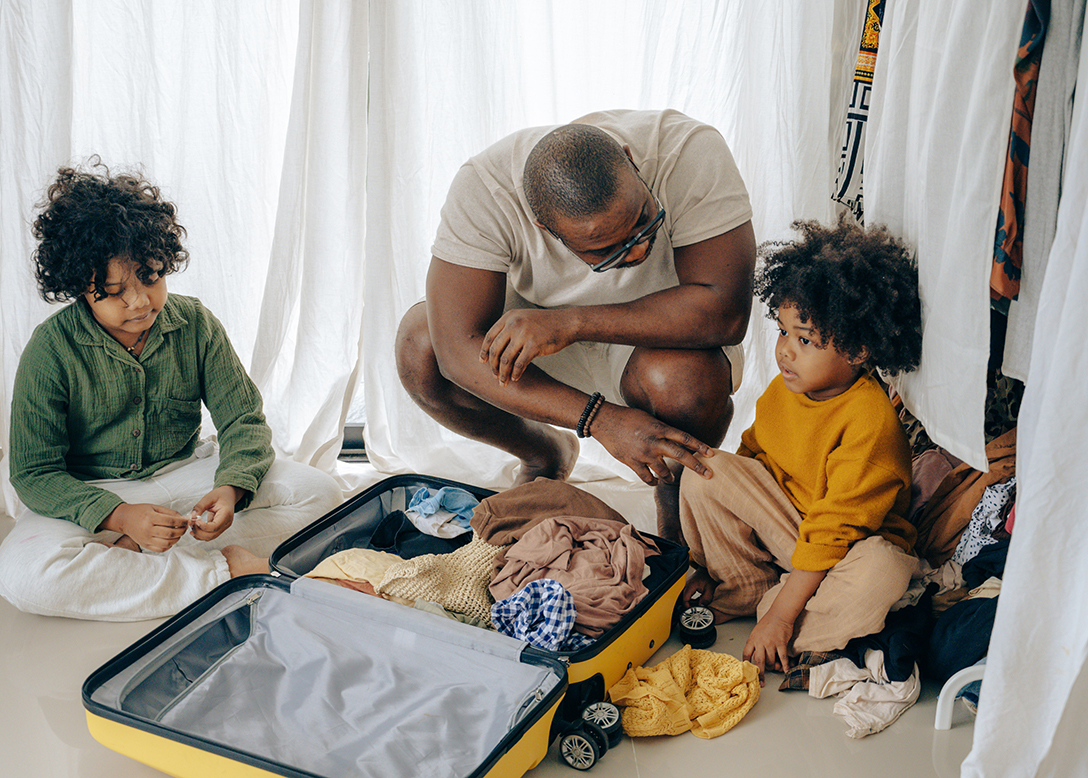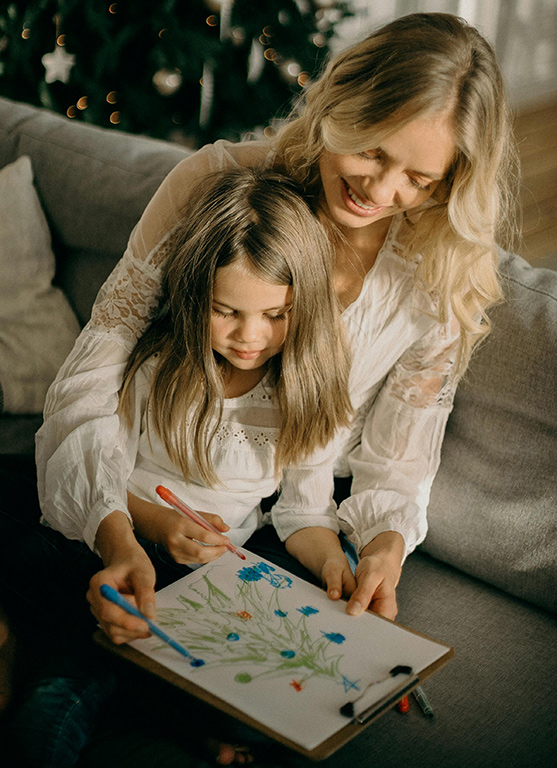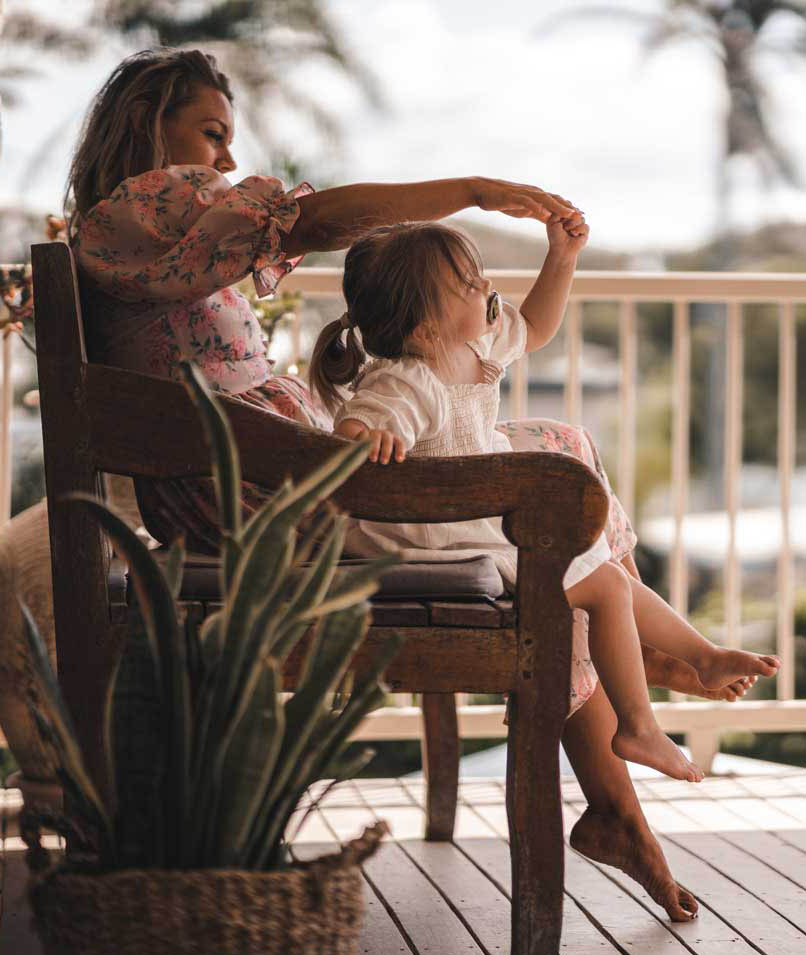by Cady Andersson
In the world of early childhood education there has been a vernacular shift away from referring to children’s undesirable actions as “misbehavior” and towards “mistaken behavior.” Why?
Primarily because as the observer we cannot know (and choose to steer away from) assuming the intent in the actions of others. This concept is taught time and time again in couples counseling. The way you perceive an event is not reality. We say this repeatedly to concerned parents at parent-teacher conferences when a child has relayed an interaction at school. Perception is not reality. I have a friend who accidentally (and habitually) leaves me off all email invitations. Does he feel bad about it? Yes. Do I feel bad about it? No. He is not intentionally leaving me out. I could ascribe a meaning to it that isn’t really there and work myself up and create a conflict (or worse, a hidden grudge), although that would be 100% my fault and 0% his fault.

When we label a child’s actions as “misbehavior” we are ascribing malice. We are assuming that the “offender” knows something intentionally unkind or dangerous has been done. When we believe a person is being reckless or unkind we get angry. When we are angry we cannot learn anything about the other person, nor can we solve the problem at hand (when our emotional brain is activated our logical brain is short circuited).
How To Resolve Mistaken Behavior Issues
The solution here is twofold.
Step one: Rewire your thinking to consider undesirable behavior from your tiny humans as mistaken behavior. This allows you to set aside feelings of frustration as a caregiver and use the moment as a teaching opportunity. “I see you opened the peanut butter jar and put some in your hair. That must have felt pretty silly. Peanut butter is for eating. Let’s go wash this out.” This might be challenging at first as you struggle against your brain’s efficiency in automating responses. However, as your brain begins to use the new habit again and again, it will become second nature.
Step two: Become curious. When we are curious, we open up discussion. This works for our partners, our colleagues, and our children. “I see you opened the peanut butter and put some in your hair. That must have felt pretty silly. Peanut butter is for eating. Let’s go wash this out. I wonder why you did that. Did it remind you of shampoo and conditioner? Were you wondering what it would feel like?”
When we say to another human (pint sized or not) “I noticed you did this – can you tell me a little bit about what you were trying to do here – I want to understand better” guess what happens? They almost always tell us. And guess what happens then? When someone else tells us their perspectives and experiences surrounding their actions, we almost always learn about them and increase the intimacy and trust between us and them. What a magical way to develop closeness between you and another human – to remove the fear of how you are going to react. Children are extremely vulnerable – physically weaker, less aware cognitively, and often blamed for simply thinking like a child. How will they ever learn if we yell at them when we could be teaching them?
A child’s brain is different from an adult’s. Children are incapable of thinking and reasoning like adults (which is why we don’t ask them to do our taxes for us). Hands-on learning experiences are the most effective learning tool as they teach a palpable cause and effect relationship. In our example above here is the child’s learning process: Peanut Butter + Hair = Extra Shower = Less Peanut Butter For Snacking = I Have To Help Clean Up The Kitchen Floor Where My Little Peanut Butter Hands Touched = Peanut Butter Is Only For Eating.
Here again, remember that learning cannot happen outside of a warm, positive relationship. How much of your best learning has happened when someone was yelling at you for making a mistake? I personally learn nothing when the speaker’s tone is coming in as even slightly aggressive. Why? Because my brain reacts to preserve my physical and emotional safety in the scenario. Being yelled at sends many people into a fight, flight, freeze, or fawn response. Can we learn about why we shouldn’t have stuck a stick out as Sarah passed by on her scooter when we are being yelled at by the person we love most in the world? Probably not. I know I sure can’t. Can you?
Children have all the same feelings as adults with fewer skills and less practice in managing them. They need to know they are safe to be able to learn. One of the best phrases I can share with you to highlight this is from The Actor and the Target author, Declan Donnellan, who states “The rehearsal space must be safe so the performance may be dangerous.” The rehearsal space is the learning environment – the home you live (or work) in, the classroom, as well as your relationship with the child. Your relationship with the child is the most important learning environment of all. These things must be safe so that the child feels prepared to take risks in learning.
So how do we convey safety to a child when we are stressed in a situation? First, take a few deep breaths, count, smell a flower, think of the color purple – do whatever you need to do to interrupt your knee-jerk emotional response. Then tend to anyone who might be physically injured and calm the children down. Tell them what you saw, “Hey, Cassie. I saw that when Michael was trying to climb down from the tree, you took away the chair he was using and wouldn’t bring it back. Can you tell me about that?”
Cassie will answer you, especially if you ask her in a kind voice and at her eye level. Kneel, squat, sit down, whatever – remember that you are tall, and looming over children is physically intimidating whether you are upset or not. Her answer might surprise you. You may find that you were way off base with your assessment of the situation. Children do not think like adults. Jean Piaget tells us that the cognitive abilities of children are far different than that of adults. All trained educators echo his conclusion. These are all possible responses Cassie may give you:
- “Michael said he was a bird now that he was in the tree, and I wanted to see him fly.”
- “I needed it for my castle.”
- “He took it away from me and said I could have it back. Then he changed his mind.”
- “Michael said he was going to hit me when he came down, so I wanted to stop him.”
The more curious you become, the more you are going to understand the actions of children and become a trusted ally. This is especially important for later years. When something scary is happening in a child’s friend group, you want your child to come to you instead of hide from you. If you think it is important to be feared to be respected, imagine your child getting into a car with a drunk friend behind the wheel because he was afraid to call you and ask you to come get the two of them. If a child is afraid of how you might react, then that child is less likely to come to you about big things like sex, drugs, depression, unsafe behavior from friends, bullying, or heartbreak.
Let your child know you are curious about their choices and not a god of thunder there to punish them with your hammer (or lightning or whatever weapon the culture of your choice provides to a similar idol).
Dan Gartrell defines mistaken behavior as something that “results from attempts by inexperienced, developmentally young children to interact with a complicated, increasingly impersonal world. When mistaken behavior occurs, adults significantly affect what children learn from the experience” (A Guidance Approach for the Encouraging Classroom 86).
Three Levels of Mistaken Behavior
Gartrell writes about three levels of mistaken behavior:
- Experimentation
- Socially Influenced
- Strong Unmet Needs
In Experimentation, the child’s motivator is curiosity. This is the “I wonder what will happen if…” stage. This stage of mistaken behavior can also occur when a child is totally engrossed in an activity and inadvertently causes a conflict. Guess who learns through experimentation? All of us. What is dating if not a series of experiments? What is cooking? What is trying a new exercise routine? It is all experimentation. Experimentation often needs guidance in order for the “scientist” to find value in his or her “data.” Imagine that children are miniature graduate students in your science lab of life. You are there to guide them, to provide tools for them, and to make sure they don’t blow themselves up. You are here to help craft meaning from experience and it is a huge responsibility.
Socially Influenced – the second level of mistaken behavior – happens when little ones are “reinforced in a behavior, sometimes unintentionally, by others important to them” (A Guidance Approach for the Encouraging Classroom 89). So if Experimentation mistaken behavior is spontaneous and guided by curiosity or engagement, Socially Influenced mistaken behavior is learned and guided by a desire to elicit a specific reaction from or to behave like a loved one. This can include colorful language, mimicking behaviors that peers enjoy, repeating behaviors seen portrayed on a television show, or perhaps a dare from a loved one.
Asking kindly about the thought process surrounding the experience will help you understand and guide the child to make more desirable, situationally appropriate, and safe choices in the future. The key is to inquire and remain unemotional about the experience. When you fully understand the child’s motives, reflect back what the child thought or felt in the moment (so the child feels understood), tell the child why that action may be unsafe/hurtful/ inappropriate, and suggest what could be done next time the child is feeling that way. The idea here is that mistaken behavior is a teachable moment. Teach your children. Guide them. Encourage them.
The last level of mistaken behavior is Strong Unmet Needs. “Unlike mistaken behavior at Level One and Two, persistent strong emotion motivates Level Three mistaken behavior. Unmet needs for safety, security, and affection cause the young child to perceive much in life as threatening. With perceived threat comes stress levels that children cannot deal with on their own” (A Guidance Approach for the Encouraging Classroom 93). This intensity and persistence in mistaken behavior is a sure sign that it is time for additional help and support from a doctor or a therapist (preferably both as the underlying cause can be emotional or physical pain).
Now that you have a brief snapshot of how early childhood educators understand and identify the behavior of the little ones in their classroom, you are better equipped to stay calm when mistaken behavior arises. The most important thing you can take away from this exploration of behavior is to stay curious and adopt a firm and friendly attitude. This will help you understand children and adults alike.


